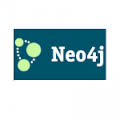This tutorial explains how to integrate Spring Data REST, GemFire and JQuery frameworks. Multiple JavaScript frameworks can be integrated with the Spring Data REST for consuming the services. We’ve explained integration between Spring Data REST & AngularJS, where in a GemFire in-memory platform was used for presenting the data repository. Also read: Spring Data JPA Spring …
Spring REST
Spring Data Neo4j 3 REST Exporter – Converting Spring Boot JAR Application To WAR
This tutorial is the continuation of the previous tutorial for building the standalone application using spring boot. This guide walks you through the process of converting a runnable JAR application that was built with Spring Boot into a WAR file that you can run in any standard servlet container. You’ll take a simple Spring MVC web …
Spring Data Neo4j 3 REST Exporter (Java Application)
This tutorial walks you through the process of creating an application that accesses graph-based data through a hypermedia-based RESTful front end. You’ll build a Spring application that let’s you create and retrieve Employee and Address objects stored in a Neo4j NoSQL database (Neo4j Server) using Spring Data REST. You’ll use the non embedded Neo4j for achieving …
Spring Data REST Exporter
This tutorial provides the detailed instruction on how to use Spring Data REST project in your Spring MVC applications to export your JPA entities. The greatest advantage of using the Spring Data REST is that, it easily exports the entities and made available through the HTTP protocol. Using Spring Data REST repository exporter project, you …
RestController Annotation in Spring 4
In this tutorial I am going to explain one of the new spring annotation @RestController introduced as part Spring 4 release. The spring 4 version comes up with lot of exciting new features. One of the API improvements is new RestController annotation which is inherited from the @Controller annotation. If you are interested in receiving …
Spring and Jersey Integration Example
This tutorial explains how to write a simple example using Spring and Jersey. This example uses Jersey for the REST implementation, Spring is used for managing the beans. In my previous tutorial, I have explained how to write a simple REST application using Jersey. We also can use Spring alone for implementing the RESTful web …
How to use Spring HATEOAS LinkBuilder API with Spring REST?
Hypermedia as the Engine of Application State (HATEOAS) is a constraint for the REST architecture. If you are not familiar with the REST web services, REST is services exposed using an URI that is shared to the clients. A client can directly access that given URI to get the response which is mostly a JSON …





